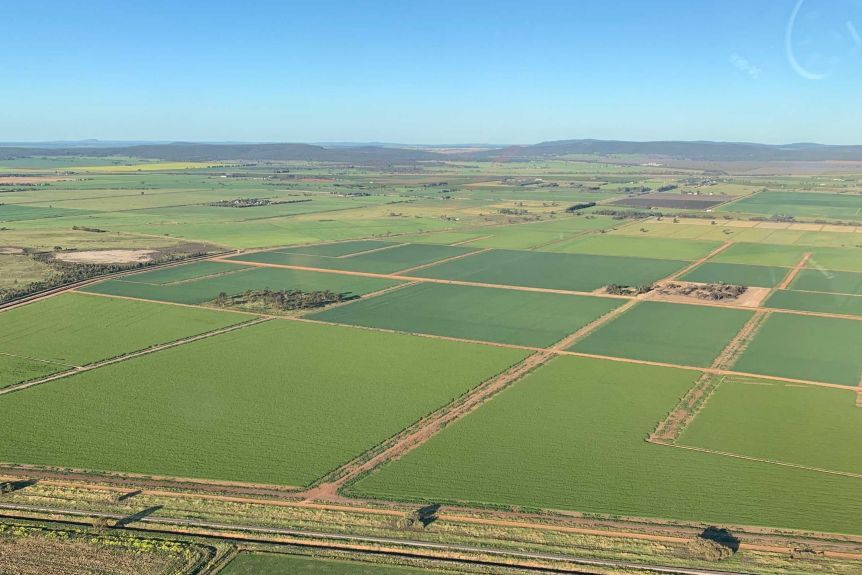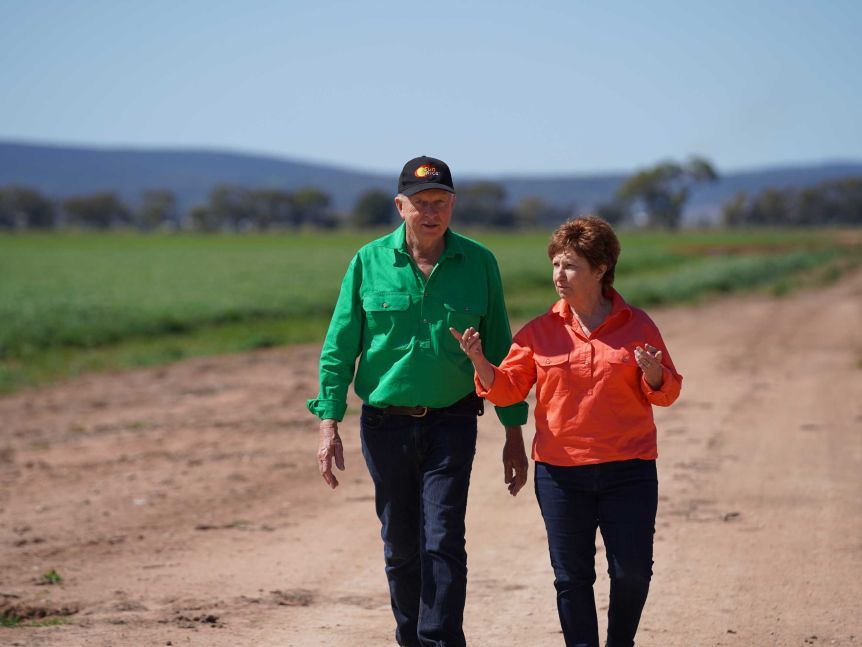1MG FlippingBooks
Award-winning Leeton rice growers celebrate 45 years of commitment to the crop

It is 45 years since Peter Draper grew his first rice crop on his farm at Leeton in the NSW Riverina, and the devout grower has no plans to retire anytime soon.
Key points:
- Peter Draper harvested his first rice crop in 1975
- He has only missed two crops in 45 years due to drought and low water allocations
- Peter and Erin Draper have been recognised as Growers of the Year for the rice industry
"My father is 95 years old and still has a farming interest so and I can't retire before him, can I?" Mr Draper said.
"My first crop was actually sown by my father in 1974 when I was doing my High School Certificate.
"So it's been a long run with the rice industry and we've only missed two crops in that period."
Drought and low water allocations meant they were unable to grow rice in 2007 and 2019.
Rice right fit for cropping rotation
Rice is the perfect fit for the Draper's cropping rotation.
"It's not just for the cash flow that we grow it, it's also good for our soil and improving organic matter," he said.
"We grow seed oats as well and they need a crop like rice to clean the ground up to get rid of the black oats.
"The moisture that's left behind from the rice helps us grow a good crop after it."
During their career growing rice, the Drapers have studied the crop internationally in the United States and Asia.
"Rice is probably the only crop you can grow as a monoculture and I think that also makes it a really great crop to grow," he said.
"When Erin and I were in California in 1983 we stood in front of a paddock that had rice grown in it every year since 1940, and when I was in Japan there was a paddock that had grown rice every year for 1,000 years."
Rice a staple crop for Drapers
The Drapers have dabbled in other summer crops over the years including popping corn in the 1990s and more recently cotton.
They have undertaken extensive earthworks and land development in their paddocks, transforming their irrigation layout from bankless irrigation to beds in bays, which requires less water and means crops can be interchanged.
"Three years ago when rice prices were down and cotton prices were up we opted to grow our first cotton crop, but we always seem to gravitate back to rice," Mr Draper said.
Research game changing for growers
Rice is a relatively niche industry in Australia, with the majority of the crop produced on farms in the Riverina in southern NSW.
"It's always been an amazing industry to be part of because the geographic region is reasonably small so the industry works together really well," Mr Draper said.
He said the Ricegrowers' Association of Australia, the Rice Marketing Board, and SunRice work together with growers who also contribute to research.
"Growers have put a lot of money into research and that's what I like about the rice industry," Mr Draper said.
"They are keeping us ahead of changes all the time and always aiming for improving rice quality and yield, and finding water saving where they can.
"We've had a lot of changes in the industry with our rice varieties that keep changing, but probably the biggest changes have been with technology and our new irrigation layouts, which are giving us a lot more flexibility to grow a range of crops, and are also saving water."
The Drapers have off-farm interests in the rice industry with Erin currently secretary of the Ricegrower's Association of Australia's (RGA) Yanco branch.
She is also a member of the RGA central executive and was recently elected to its board.
Paddocks prepped for next crop
The Drapers are gearing up to plant another rice crop next month.
Generous rain since autumn has filled storage dams and lifted the Murrumbidgee Valley general security water allocation to 46 per cent. It was just 6 per cent in April.
"We are very excited to grow more rice this season," Mr Draper said.
Last year they grew just 25 hectares of rice due to the low water allocation, but this year they will grow at least 60ha.
"The problem this year is that we've got every paddock pretty well full of winter crop so we've only got three spare paddocks for rice," he said.
"Depending on how the season goes we may be putting rice in after a barley harvest.
"But we'll make that decision later, depending on how the season goes, whether we end up with more water or less water. So it's a plan in progress."
Reward for rice industry stalwarts
The Drapers' hard work and dedication to the rice industry has paid off, now being named SunRice Growers of the Year.
"It's very surreal for us to be given that award. It's still sinking in but we are very happy and very honoured," Mr Draper said.
Rice Extension coordinator Troy Mauger said Peter and Erin demonstrated a commitment to excellence in all aspects of rice growing.
"The awards provide an opportunity to recognise growers who are adopting farming best practices, achieving sustainability outcomes, and improving business management despite unpredictable climate and water conditions," he said.

















